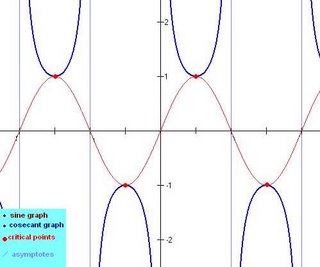Chapter 3 Test Topics
Here’s a list of topics for Thursday’s test:
Precalculus Chapter 3 Test Topics:
Radians to degrees (special angles)
Degrees to radians (special angles)
Sketch a sinusoidal graph given an equation
Demonstrate the concept of radians by wrapping an axis around a circle
Sketch an angle in radians
Show the steps necessary to convert from radians to degrees, or vice versa
Position/Locate a radian angle
Inverse trigonometric functions
The meaning of arccosine
The definition of arccosine
A visual interpretation of radians and arclength
Determining a radian measure of an angle
Determining a sinusoidal equation from a graph – sine and cosine
Word problem! Work with the given situation graphically, numerically and algebraically.
That’s it! The format is as expected – ½ calculator, ½ Non-Calculator. I’ll be in my classroom on Wednesday after school and before school on Thursday. I’ll also be available online later on Wednesday evening. If you have specific questions Wednesday night, email me!
See you in class!
"Sometimes when I get up in the morning, I feel very peculiar. I feel like I've just got to bite a cat! I feel like if I don't bite a cat before sundown, I'll go crazy! But then I just take a deep breath and forget about it. That's what is known as real maturity."
- Snoopy

































